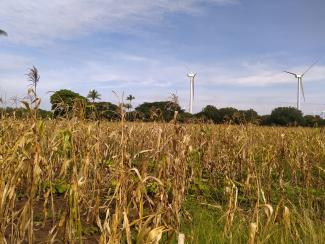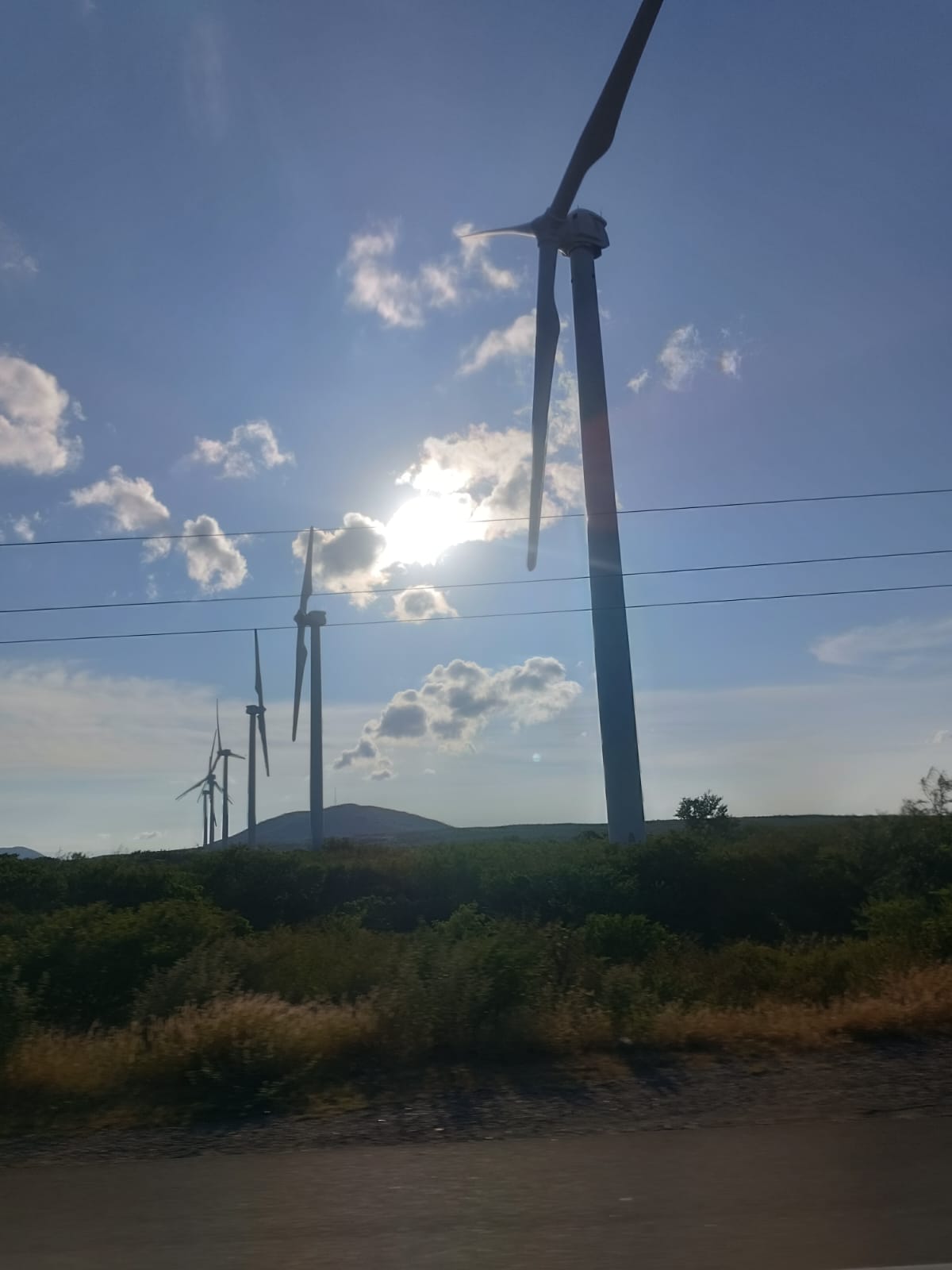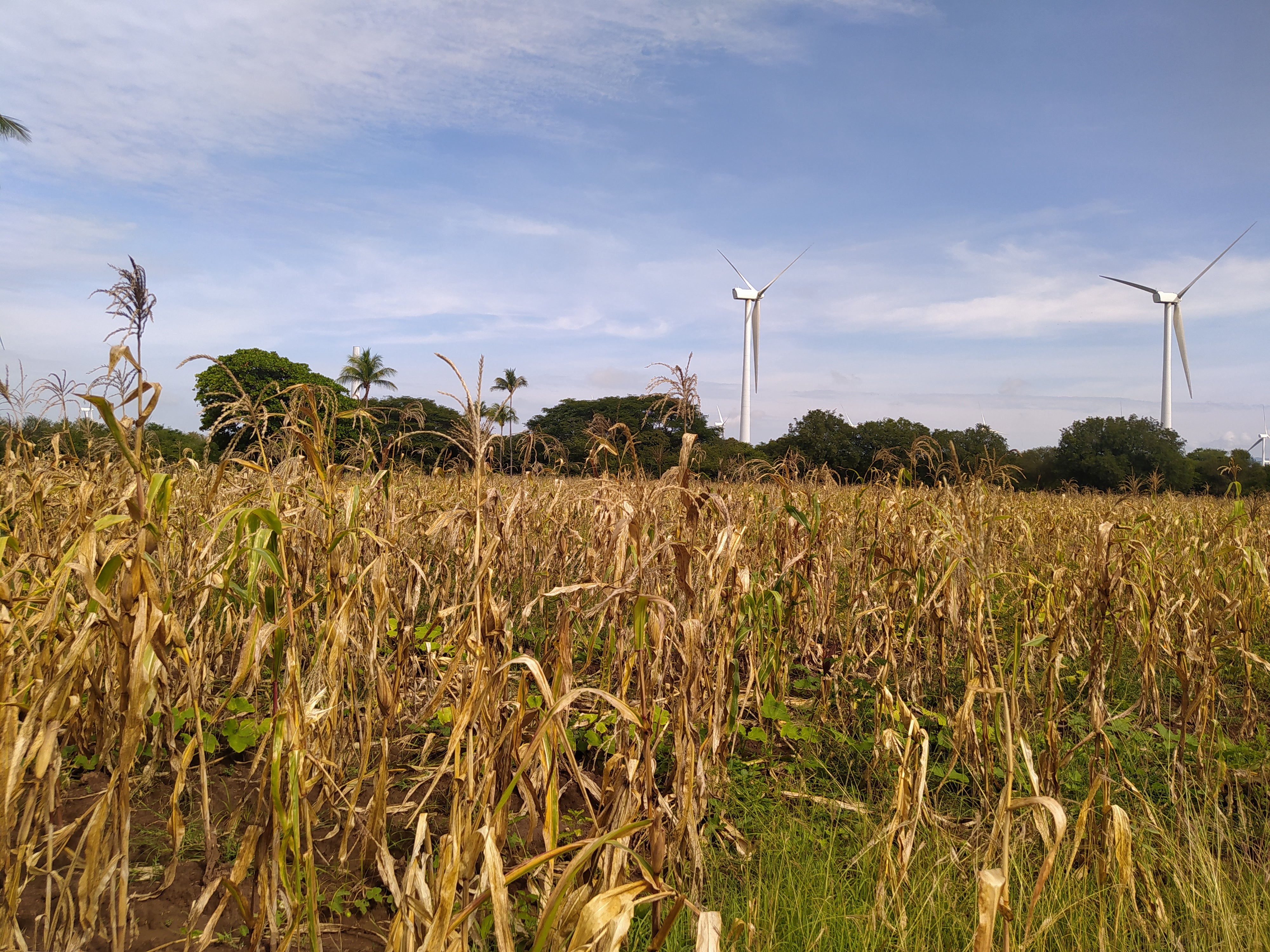The Quest for Green Energy Filled My Community with Violence
9 November 2023agnes

By Bia’ni Madsa’ Juárez López (Ayuuk and Binnizá)
The Tehuantepec Isthmus in Oaxaca, Mexico, is a territory shared among the Binnizá, Ikoots, Angpøn, and Ayuuk Peoples that produces 76.8 percent of the country’s wind energy. As of January 2020, 1,600 wind turbines had been installed here at 32 wind farms, and thousands more are in construction plans, in an effort to secure “green energy” to combat climate change.
My generation has witnessed how our community and region went from being a quiet place to one where there is news of violence every day. It seems like yesterday, in my adolescence, when it was common for us to walk almost everywhere in the town. Although it is not small, we would go downtown and walk back at midnight. I made that night journey alone many times, greeting the grandparents who sat in their seats on the street in front of their houses with the doors open behind them.
We were told that mega development projects would bring economic growth, and with them, prosperity. This was one of the main arguments for why the wind energy megaproject was approved in my region, where communities are impoverished and long to improve their living conditions. Indeed, the economic benefits of wind power came, but that did not mean prosperity for the local population—quite the opposite. Bigger vans, new houses, construction of new businesses, houses, and rooms for rent for the new influx of migrant workers, increased entertainment and food businesses, and improvement of infrastructure for wind farms are some of the changes that were visible, especially at the beginning of the expansion of wind farms. However, the social cost is undeniable.

“They kidnapped the neighbor from the carwash to demand 10,000 pesos (approximately $570).” “They kidnapped the family of the teacher on the corner in their own house, they tied them up until they gave them all their belongings.” “Some boys on bikes stabbed someone for stealing their things.” “They killed him to steal his cell phone.” Such conversations have become common among neighbors in the market and in their homes. Due to the increase in violence, entire families, including mine, moved from the city. Others chose, after a kidnapping or extortion, to leave their homes and go rent in a quieter neighborhood in the same city.
Social instability deepened when people began to commercialize the land. Lawsuits and family divisions arose over who had the right to the family lands to rent or sell to wind farms. Cases of dispossession and falsification of documents between siblings and relatives increased over the lands of grandparents that had long been completely forgotten, lands that at one time produced the corn that supported the families. What’s the point of having trucks and a freshly painted house if families are fragmented?
The cost of living has increased. Juchitán today is one of the most expensive places to live in the region. From a brief visit, you will see the streets are now in terrible condition. The growing water scarcity is evident, and the last straw is poor electricity service. Grandparents can no longer sit outside their homes because of safety concerns. It is true: millions of pesos circulate here. We know they exist, but the population sees them fading before our eyes without translating into benefits for the community.

The leaders of the different political parties who took advantage of the opportunity to grab land before the wind energy expansion are among those who have benefited the most. Corruption has increased, and internal battles to strengthen their power and political interests using the wind project are evident. In 2017 alone, the Juchitán city council received 65 million pesos (3.7 million USD) from wind companies, which disappeared without any clarity about the use and destination of these resources. Not to mention the many other irregularities and abuses in the implementation of the projects such as the forced signing of contracts, and lack of clear information in the appropriate language about the project.
An international commercial infrastructure project, the interoceanic corridor, includes a train that promises to transport products between the Pacific and Atlantic Oceans faster than the Panama Canal. Already, $2.8 billion of the $7 billion that was budgeted for this project has already been invested. As if this were not enough, the President of Mexico recently visited the Isthmus and promised four more wind farms using the same argument of economic need in the region. But investment projects do not happen in a vacuum; they always bring with them organized crime, leaving the communities in the middle of the crossfire of their battles for territory.
Social instability is not an accident. It is a strategy to control land and make way for many more projects. These funds could have been put to better use to benefit the community. In this story, “green” energy has sacrificed our peace in exchange for money, leaving a deep social crisis in my homeland. No development project, even if it is disguised as green, is worth losing peace of mind.
The people of the Isthmus know that no amount of money can repair the damages, especially the social ones, that have resulted from these projects that are negotiated and defined by businessmen and States in international lobby spaces where they decide the future of regions like ours. This is why I share with you this other side of the development, a perspective that will rarely be heard. Companies and politicians go to communities promising abundance and want to use the Isthmus as an example. Here, we have another side of the story to tell.
